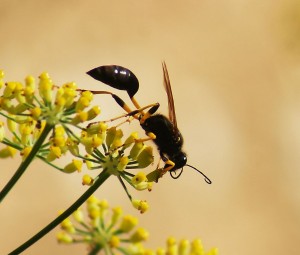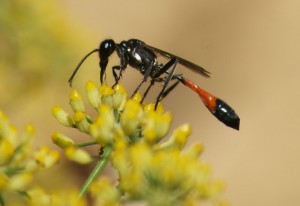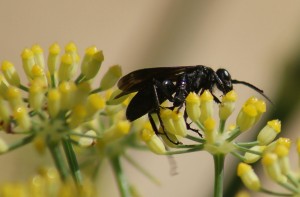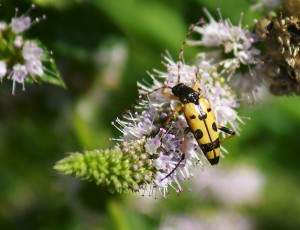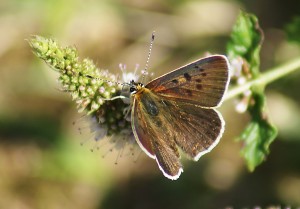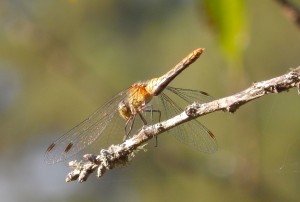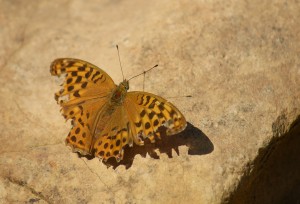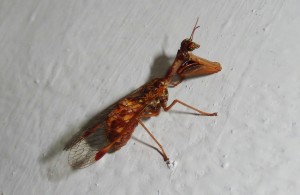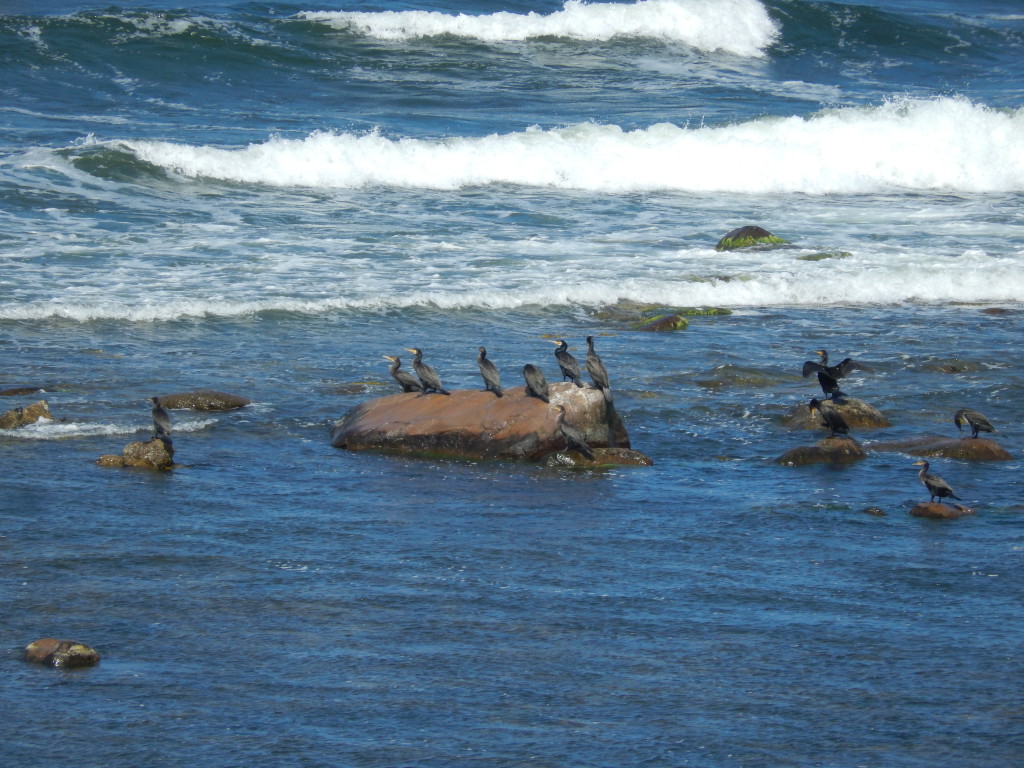
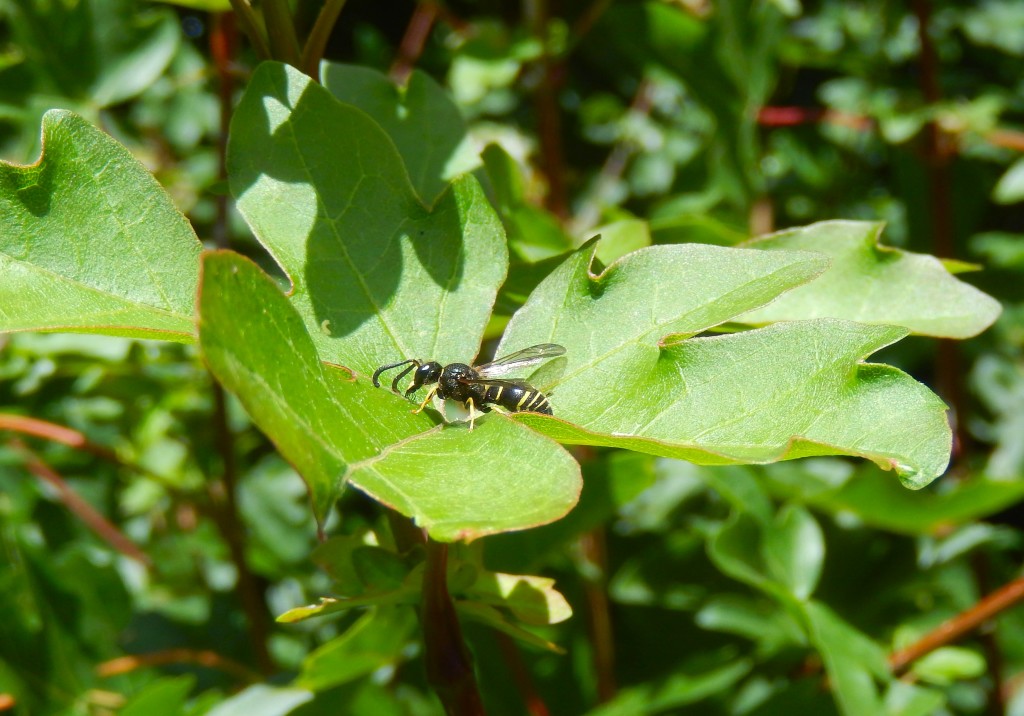
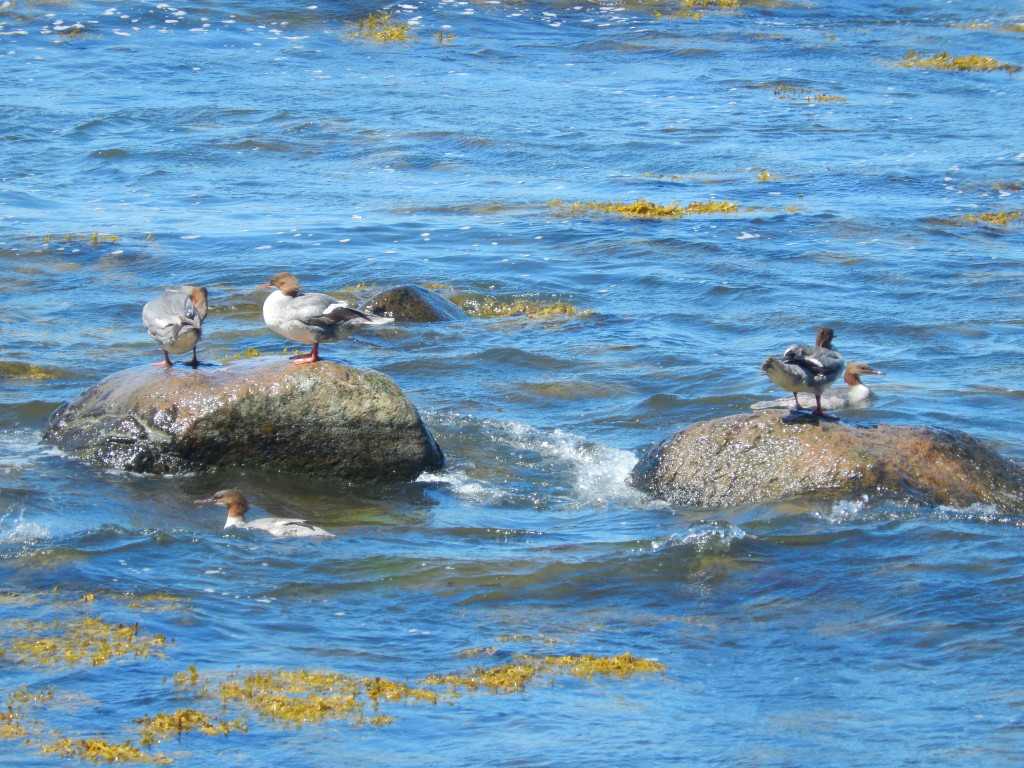
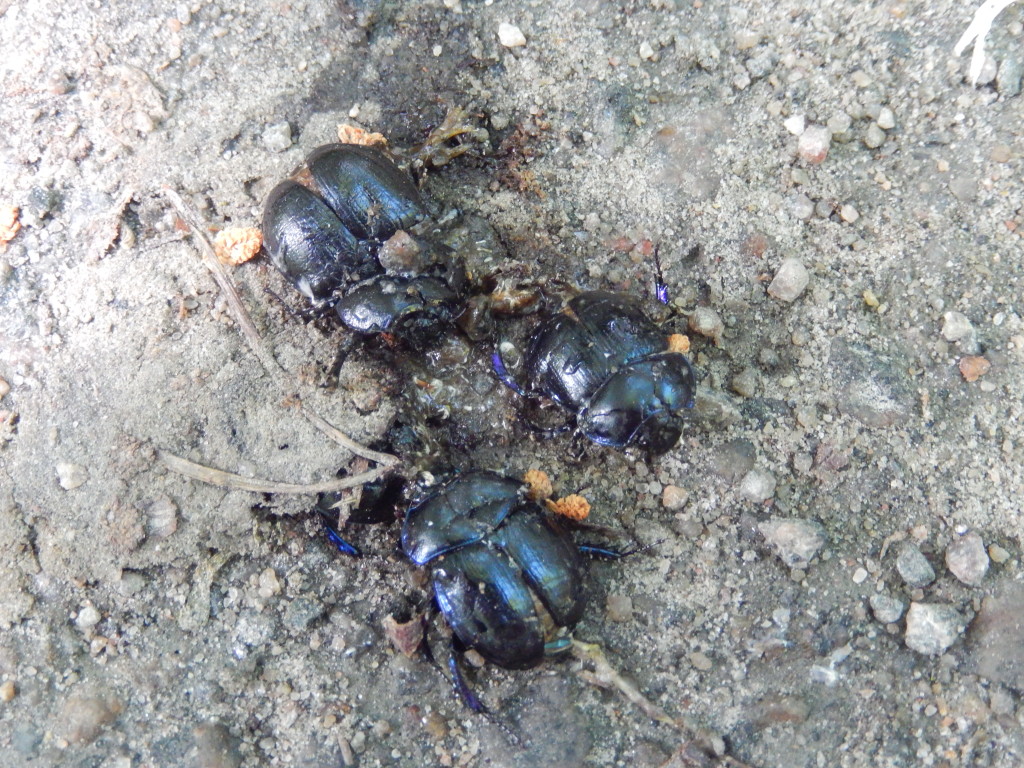
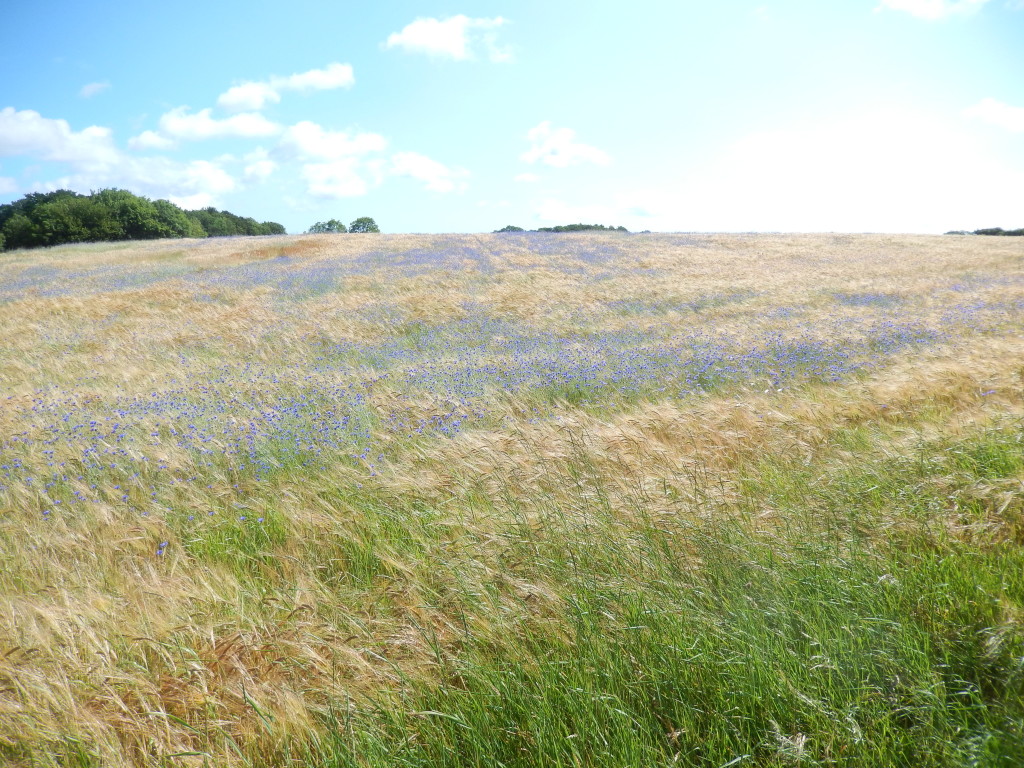
Bornholm is in some ways as Britain was half a century ago or more: there are still swathes of cornflowers and poppies, though many of the fields are plainly weed-free except for narrow margins. The sky over arable fields and set-aside is loud with the song of skylarks; the hedges are full of the cheerful little-bit-of-bread-and-no-CHEESE song of yellowhammers. Swallows race in numbers low over the corn; the towns are busy with house sparrows, swifts and house martins, the many handsome old houses and churches offering plentiful nesting places to suit all parties. The woods held good numbers of blackcap, with willow warblers in the more open areas, a chiffchaff or two, plenty of whitethroats in scattered bushes, a garden warbler or two.
Some things are simply modern, despite the unspoiled rural look of the island: butterflies seem to be few – red admirals, speckled woods, peacocks, small tortoiseshells, meadow browns, and what I think was a fritillary over a marsh-fringed lake – it was quite big and fairly pale, roughly like a dark green: perhaps it was a marsh fritillary, but I couldn’t stay to find out. It was somewhat windy all week, so perhaps there are many more species on windless days, but I rather doubt it (and wind does seem rather usual on the island).
Of course in many ways it is quite different. The presence of eider ducks and goosanders in numbers on the (brackish) Baltic Sea, along with the occasional mute swan and mallard (and a less surprising shelduck), is strikingly unfamiliar. The crows, as in Scotland, are a reminder that this is the North: handsome grey-mantled hooded crows instead of their all-black carrion crow cousins; and there are rooks in numbers all over, including in the villages, boldly scavenging.

